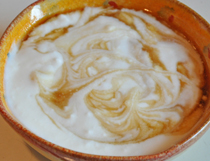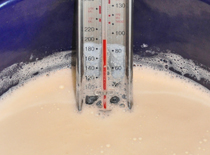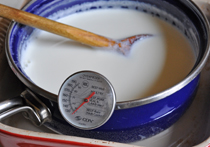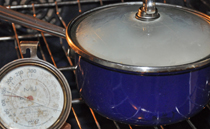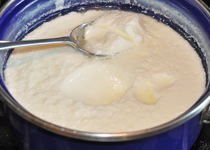May 11, 2022. A trick question.
At first glance, the answer’s obvious: yogurt.
At second glance, it’s a toss-up. If you’re not eating “plain” yogurt, your fruit or coffee or vanilla yogurt has just as much sugar as a can of Coke. What?!
Read the labels. The 6-ounce Dannon fruit-on-the-bottom blueberry yogurt: 25 grams of sugar (4.16 grams per ounce). 8 ounces of Coke: 27 grams (3.375 grams per ounce). Yikes.
Let’s shop around: Stonyfield Organic French Vanilla’s got 25 grams in 6 ounces, too. Yoplait Lemon Burst: 26 grams. Yoplait Portable Lowfat Strawberry GoGurt: 10 grams per 2.25-ounce serving. That’s 4.44 grams per ounce.
Let’s Do The Math: 25 grams of sugar = 100 calories from sugar. In a little cup of yogurt. And all calories are not created equal. Sugar calories are the worst.
Is sugar toxic? Seems like it must be. If you eat or drink too much of it. What’s too much? Probably anything more than about 200 calories worth per day. Read the whole, clear, concise and compelling story in this New York Times article.
So what’s for breakfast?
If you like yogurt, start with “plain”. All yogurt, no sugar. Want fruit? Half of a ripe banana is Way more than you get in a 6-ounce serving of the industrial stuff. It’s got 7 grams of sugar – sugar in a form that your body metabolizes slowly. Sugar that doesn’t cause a blood sugar spike like the refined sugar added to the name brand industrial yogurts. Prefer blueberry? Mash and stir in 10 big, juicy berries. 4 grams of slowly-metabolizing fruit sugar.
Want your own non-fruit sweetener? 2 teaspoons of real maple syrup in 6 ounces of yogurt’s a little too sweet for me, but it’s got just 8 grams of sugar. Same for honey.
Want to save money along with your health? Make your own …
Better Cheaper Slower Yogurt
Ingredients: whole milk and yogurt. Period. Make a small test batch to prove it to yourself. One quart of milk plus 4 tablespoons of plain yogurt with active cultures. Gotta have active cultures.
Preheat your oven to 115 F. You’ll probably have to bring it to a higher temperature, then turn it off and lower it by leaving the door open a crack. Temperature’s important. Use an oven thermometer.
Heat the milk in a pan with a tight-fitting lid. Stir occasionally. Don’t let it boil, but heat it to 200 F. Use a candy or other kitchen thermometer to get the temperature right. Stir for 10 minutes at this temperature. FYI, the structure of the milk proteins is changing at this temperature – so your yogurt will thicken and “set”.
Now let the milk cool to 115 F, just barely “hot” to the touch. Or put the pan in an ice water bath and stir for 5 minutes. That should save you 20 minutes. When you’ve achieved coolness, put 1/2-cup of the milk in a small bowl with your 4 tablespoons of yogurt. Whisk until smooth. Pour this “inoculated” milk back into the pan and whisk until it’s evenly distributed.
Now put the lid on the pan and into the pre-warmed oven. If the lid’s not a really tight fit, wrap the pan in a towel for some extra insulation. Then wait. Four to eight hours. Taste after four hours. If you love it, it’s done. If you want it to be thicker and more tart, let it go longer.
When it’s ready, transfer it to lidded containers and refrigerate. It’s yogurt. It’ll keep for a week or two if you don’t eat it before that. If you eat a lot of yogurt, make bigger batches. Up to a gallon at a time. Just increase the amount of your starter yogurt proportionately.
How Cheap Is It?
Ounce for ounce, the cost of supermarket yogurt is typically 7 times higher than the cost of milk. Make your own and save 84%. Big saving, huh?
How thick is it?
Mine turned out like good old-fashioned Dannon plain yogurt. If you like it thicker, more like a Greek-style yogurt, pour off the liquid “whey”. Or transfer the yogurt from the pan to a fine mesh colander and gently press the water out of it. The more you press out, the thicker the yogurt will be.
All calories are not created equal
If you exercise after breakfast to manage your weight, what you eat for breakfast may help or hinder the fat-burning benefit you want.
A study published in The Journal of Nutrition showed that exercise after a high-fiber, low glycemic index breakfast (meusli, yogurt, fruit) burned twice as much fat per hour as exercise following a high glycemic breakfast.”A really high glycemic breakfast: anything with a load of added sugar. Like yogurt. And Coca-Cola.
Rather use a temperature-controlled electric yogurt maker?

